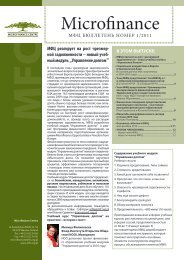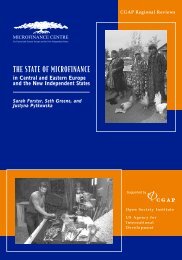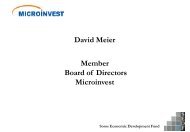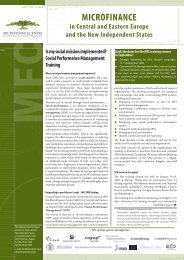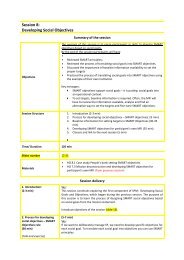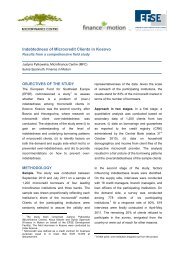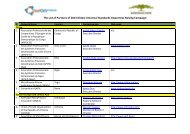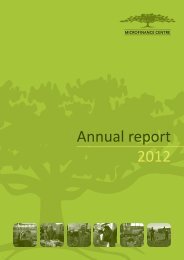Value Chains research report Tajikistan final - Microfinance Centre
Value Chains research report Tajikistan final - Microfinance Centre
Value Chains research report Tajikistan final - Microfinance Centre
You also want an ePaper? Increase the reach of your titles
YUMPU automatically turns print PDFs into web optimized ePapers that Google loves.
2010 total of 1.9 million head. The highest number of cattle is found in Khatlon Region<br />
with nearly 794,913 head or 42% of the total.<br />
Table 43: Total Number of Cattle in <strong>Tajikistan</strong> by Region (000 head)<br />
2007 2008 2009 2010<br />
Republic of <strong>Tajikistan</strong> 1702,5 1799,5 1830,0 1896,9<br />
GBAO 96,5 101,6 101,6 103,6<br />
Sughd Region 498,9 503,7 505,4 510,7<br />
Khatlon Region 695,6 743,7 756,4 794,9<br />
Districts and towns of 412,1 450,6 466,6 487,7<br />
Republican subordination<br />
Source: State Statistic Agency of <strong>Tajikistan</strong><br />
Cattle production is, although spread throughout <strong>Tajikistan</strong>, concentrated in several<br />
districts:<br />
• Districts Surrounding Dushanbe: Gissar , Vahdat, Rudaki, Tursunzade districts;<br />
• Sughd Region: Gonchi, Penjikent, B.Gafurov districts;<br />
• Khatlon Region: Bokhtar, Yovon districts;<br />
More than 90% of all cattle are raised on household plots with only 10% of production<br />
raised by agricultural businesses or farms. Successful livestock production for quality<br />
beef depends on breed, genetics, health and general management. The major indicator<br />
of successful beef production is weight gain which should average 500-700 grams day<br />
with a minimum of 400 grams per day. To achieve this rate of gain feedstuffs must be<br />
rich in protein and energy. Factors limiting profitable beef production in <strong>Tajikistan</strong> are:<br />
• Breed,<br />
• Quality of forages (the main portion of the diet),<br />
• Milk production for nursing,<br />
• Housing<br />
• Overall health and appropriate vaccination program,<br />
• Animal hygiene and cleanness of facilities.<br />
Each factor will be discussed separately below<br />
Breed. Tajik cattle are mixed breeds containing genetics from: local mixed breeds,<br />
Chernopestraya, mixed Brown Swiss, Angus, and brown-Carpathian. Artificial<br />
insemination is being used throughout <strong>Tajikistan</strong> to improve genetics with semen<br />
imported from the US, Canada, Germany, Russia and Holland. <strong>Tajikistan</strong> has its own<br />
center for artificial insemination and breed improvement with branches is several<br />
locations around <strong>Tajikistan</strong>. Also the local stations for animal insemination use local<br />
breeds for insemination. The Tajik price per insemination is 20 somoni (3.5 USD) which<br />
covers the cost of insemination with the semen purchased through many different<br />
grants.<br />
Forage. <strong>Tajikistan</strong> has a lack of quality forage for beef production, significantly limiting<br />
this industry. Some producers have access to hay, alfalfa, corn and oilcake (a by-<br />
91




